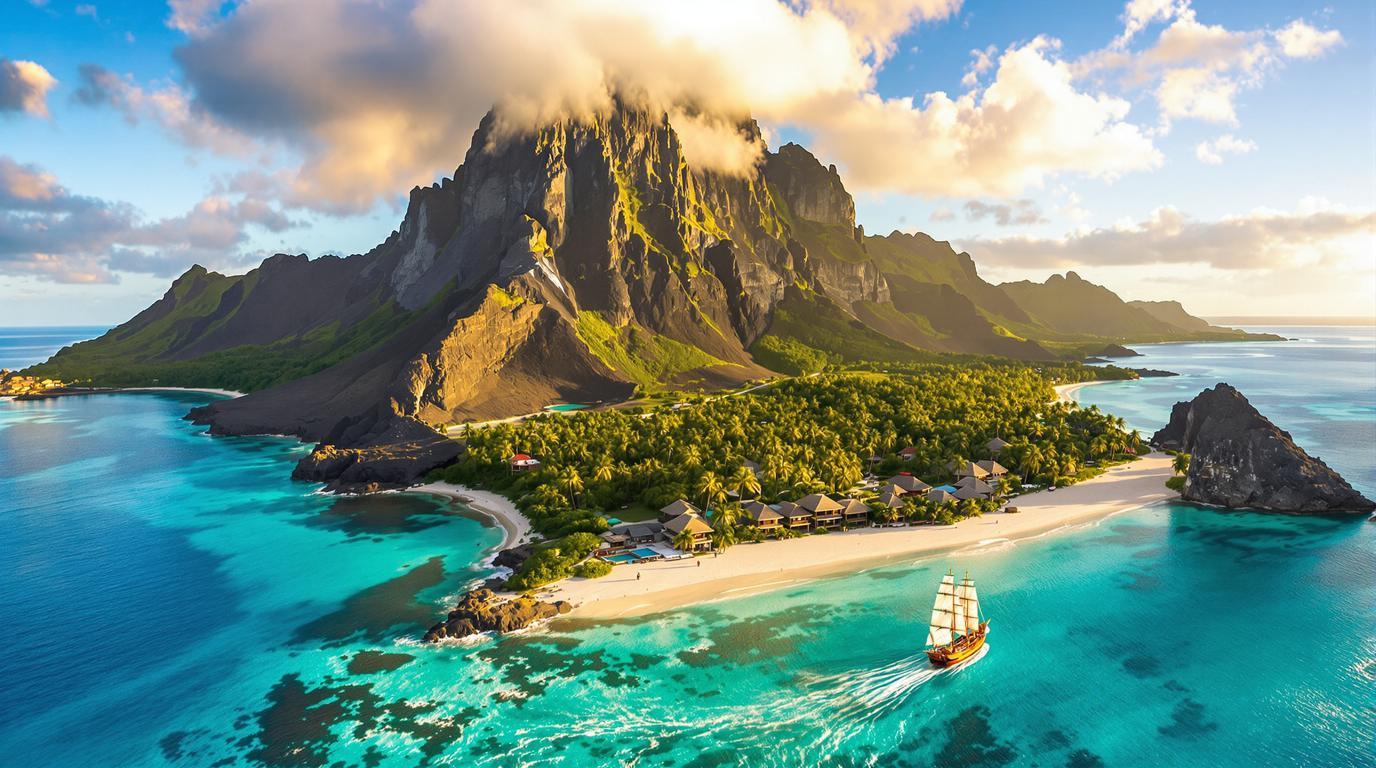Beyond the well-trodden tourist paths and bustling destinations lies a world of extraordinary beauty and solitude. Scattered across our planet’s vast oceans exist miniature paradises that fewer than 1,000 people call home. These forgotten gems offer travelers a rare glimpse into island life where time moves differently, traditions remain intact, and natural splendor exists in its purest form.
The last mutineers: Pitcairn Island’s extraordinary isolation
With just 35 inhabitants, Pitcairn Island in the South Pacific remains one of Earth’s most remote communities. Descendants of HMS Bounty mutineers who settled here in 1790 continue to inhabit this volcanic outpost, preserving a unique blend of 18th-century British and Polynesian cultures.
“Our isolation means we’ve developed our own way of life,” explains Pitcairn resident Meralda Warren. “Visitors often say they’ve never experienced such complete detachment from the modern world.”
The journey to Pitcairn itself—requiring multiple flights and a 32-hour boat ride from New Zealand—acts as a natural filter, ensuring only the most determined travelers discover its pristine beaches and lush volcanic landscapes.
Ni’ihau: Hawaii’s forbidden island paradise
Perhaps America’s most secretive inhabited island, Ni’ihau maintains a population of fewer than 170 native Hawaiians. Privately owned since 1864, this island refuses the conveniences of modern life—no paved roads, electricity, or public accommodations exist here. Access remains strictly controlled, preserving what many call the last authentic Hawaiian cultural experience.
The island’s residents speak Hawaiian as their first language and live largely as their ancestors did centuries ago, similar to other vehicle-free islands that maintain ancient traditions through deliberate isolation.
Fatu Hiva: French Polynesia’s sculptor’s dream
Thor Heyerdahl, the famous Norwegian explorer, chose Fatu Hiva for his first major expedition, enchanted by what he called “the island at the end of the world.” With fewer than 600 residents, this horseshoe-shaped volcanic jewel boasts perhaps the Pacific’s most dramatic coastline.
The island’s Bay of Virgins (originally named “Bay of Penises” until shocked missionaries renamed it) features towering basalt pillars that glow crimson at sunset. Here, locals continue crafting traditional Marquesan art and tattoos, preserving ancient artistic traditions that have nearly vanished elsewhere.
Japan’s art island: Naoshima’s creative revival
What happens when contemporary art meets a declining fishing community? On Naoshima, an island of roughly 3,000 residents in Japan’s Seto Inland Sea, this unlikely combination created one of the world’s most unique art destinations.
“We’ve transformed abandoned houses into art installations while honoring our fishing heritage,” explains local guide Tanaka Hiroshi. “The island was losing its young people until art gave us new purpose.”
Despite international recognition, Naoshima maintains its sleepy fishing village atmosphere, with time-frozen neighborhoods reminiscent of Thailand’s undiscovered islands.
St. Kilda: Scotland’s island at the edge of the world
Though evacuated in 1930, St. Kilda has reopened to limited settlement and now hosts a small research community and military personnel, keeping the population below 30. This windswept archipelago, located 40 miles beyond Scotland’s Outer Hebrides, represents Europe’s most isolated inhabited location.
The island’s cliffs—the highest in the British Isles—host Europe’s largest seabird colony, while abandoned stone cottages tell the story of the hardy community that survived here for over 4,000 years. Much like certain medieval Spanish settlements, St. Kilda preserves ancient architectural styles that have disappeared elsewhere.
Palmerston Atoll: One family’s private kingdom
Imagine an island where all 35 residents descend from a single Victorian Englishman. Welcome to Palmerston Atoll in the Cook Islands, settled in 1863 by William Marsters and his three wives. Today, their descendants maintain a communal society governed by Marsters’ original laws.
Reaching this Pacific paradise requires a multi-day journey by supply ship from Rarotonga. Visitors are assigned a host family and typically spend several weeks immersed in island life before the next ship arrives.
“When you visit Palmerston, you’re not just seeing our island—you’re becoming part of our extended family,” explains Marsters’ great-great-grandson Edward.
From Pitcairn’s mutineer descendants to St. Kilda’s dramatic seabird colonies, these microscopic communities offer authentic cultural immersion that rivals any UNESCO masterpiece. For travelers willing to venture beyond convenience and connectivity, these forgotten paradises promise not just destinations, but transformations—living proof that paradise isn’t measured in luxury amenities, but in authenticity and untouched beauty.
